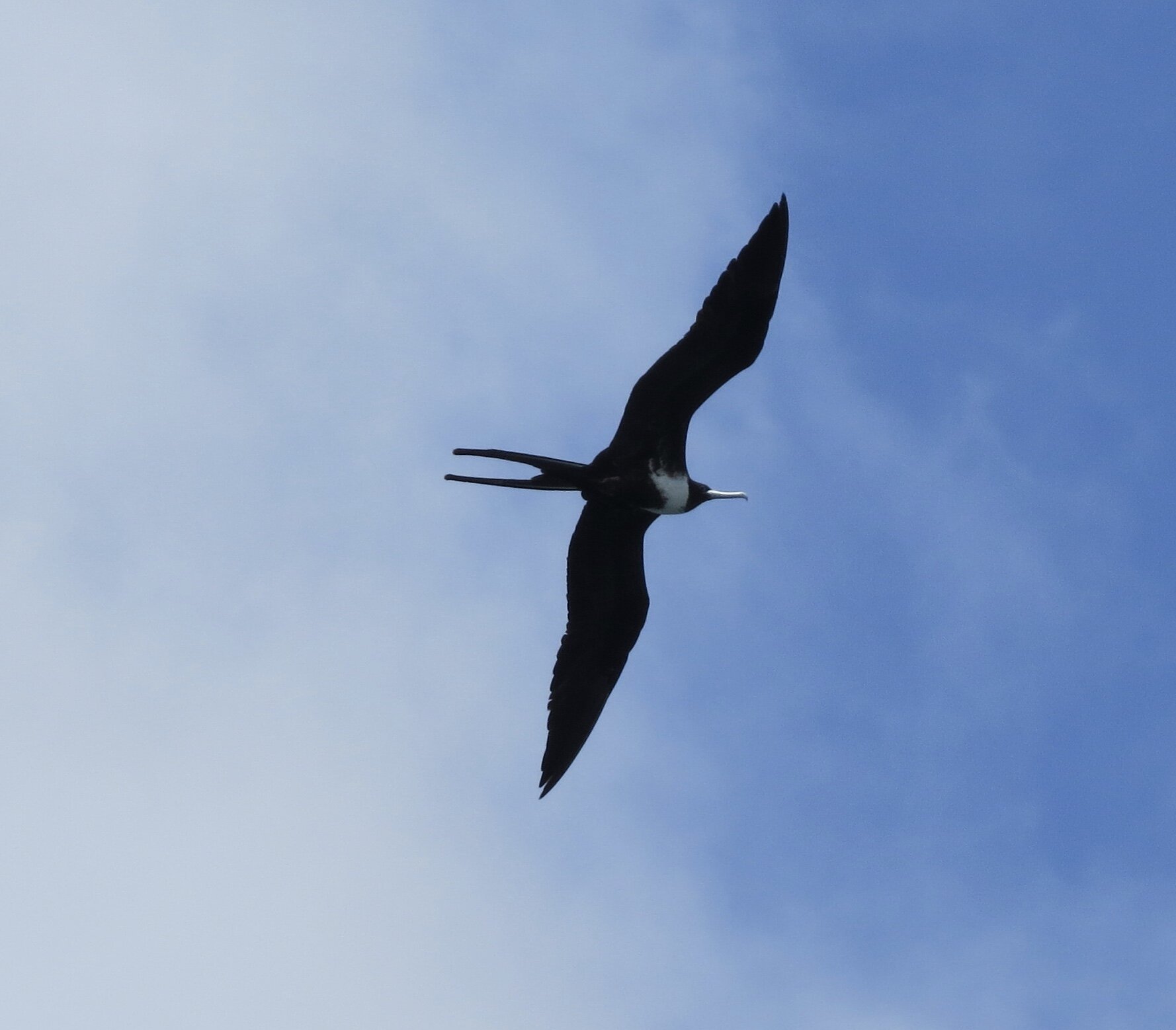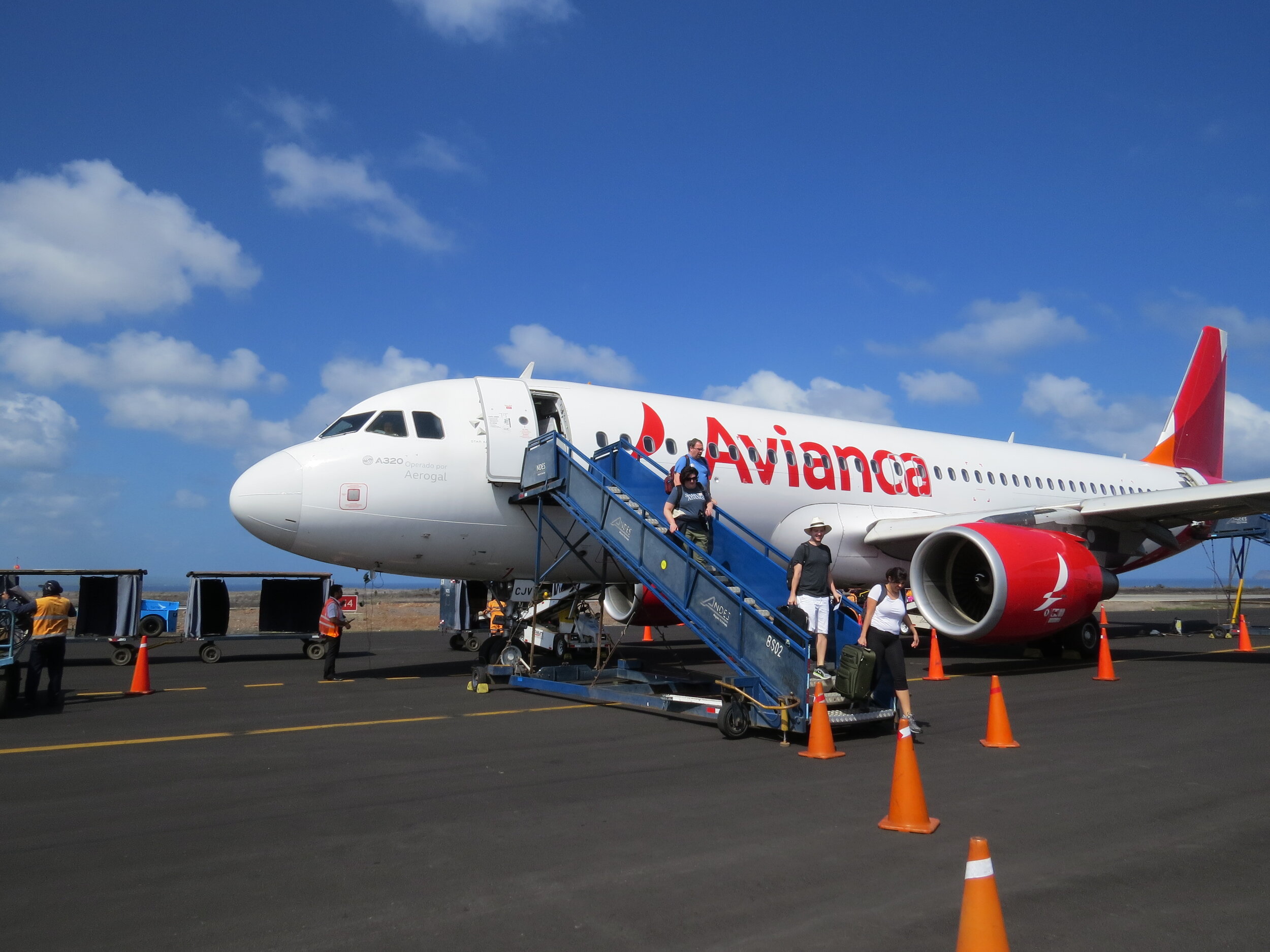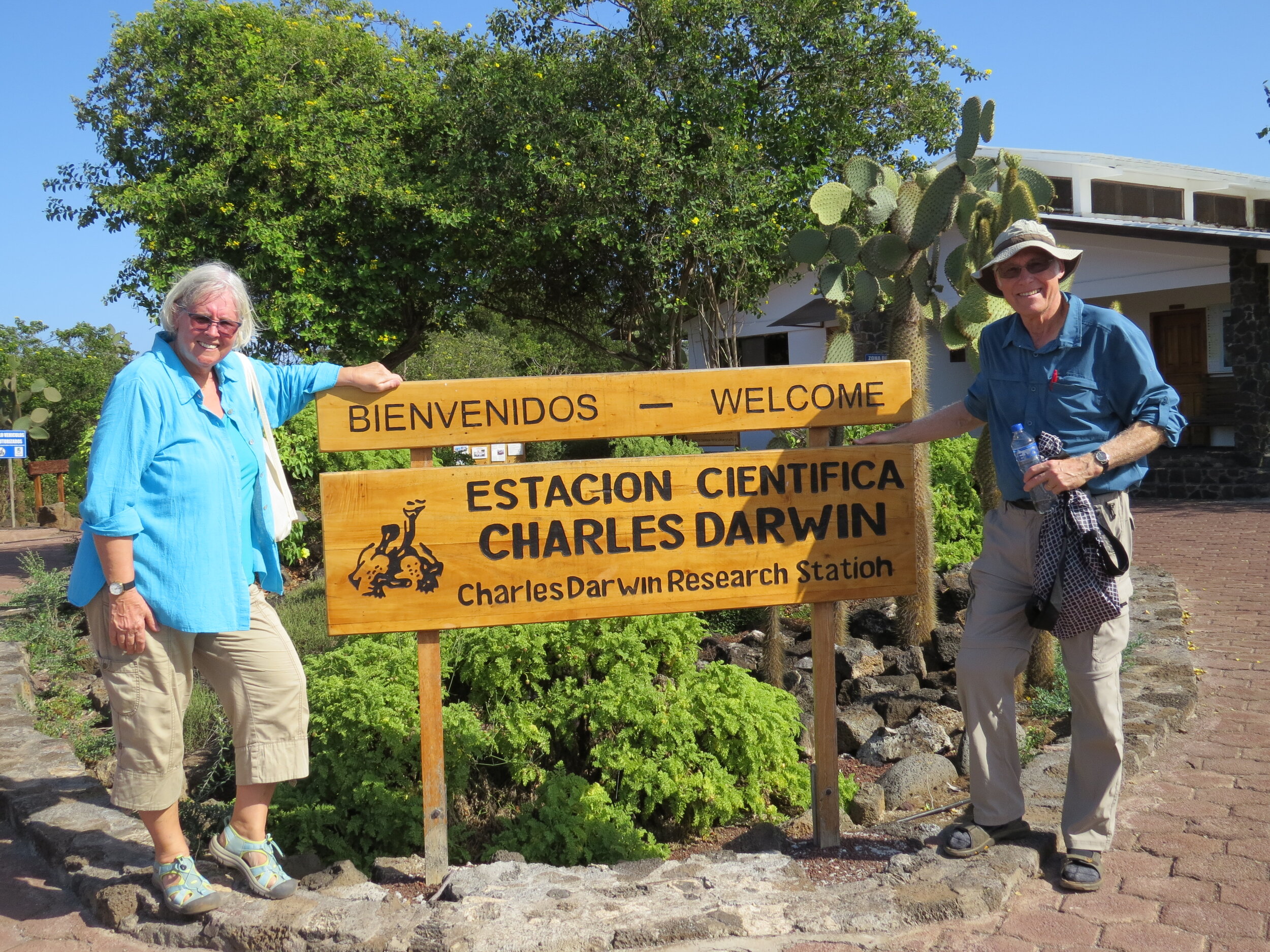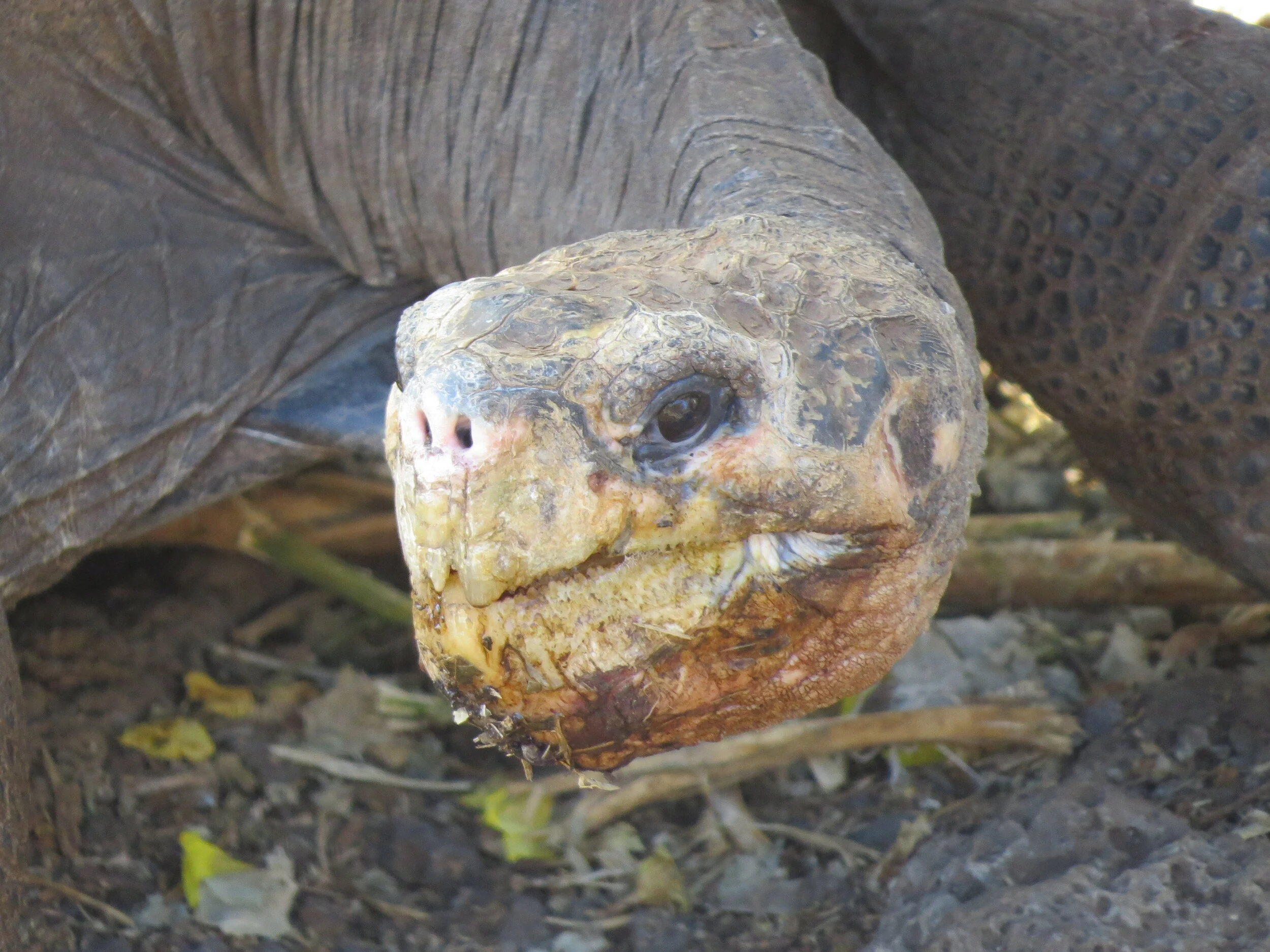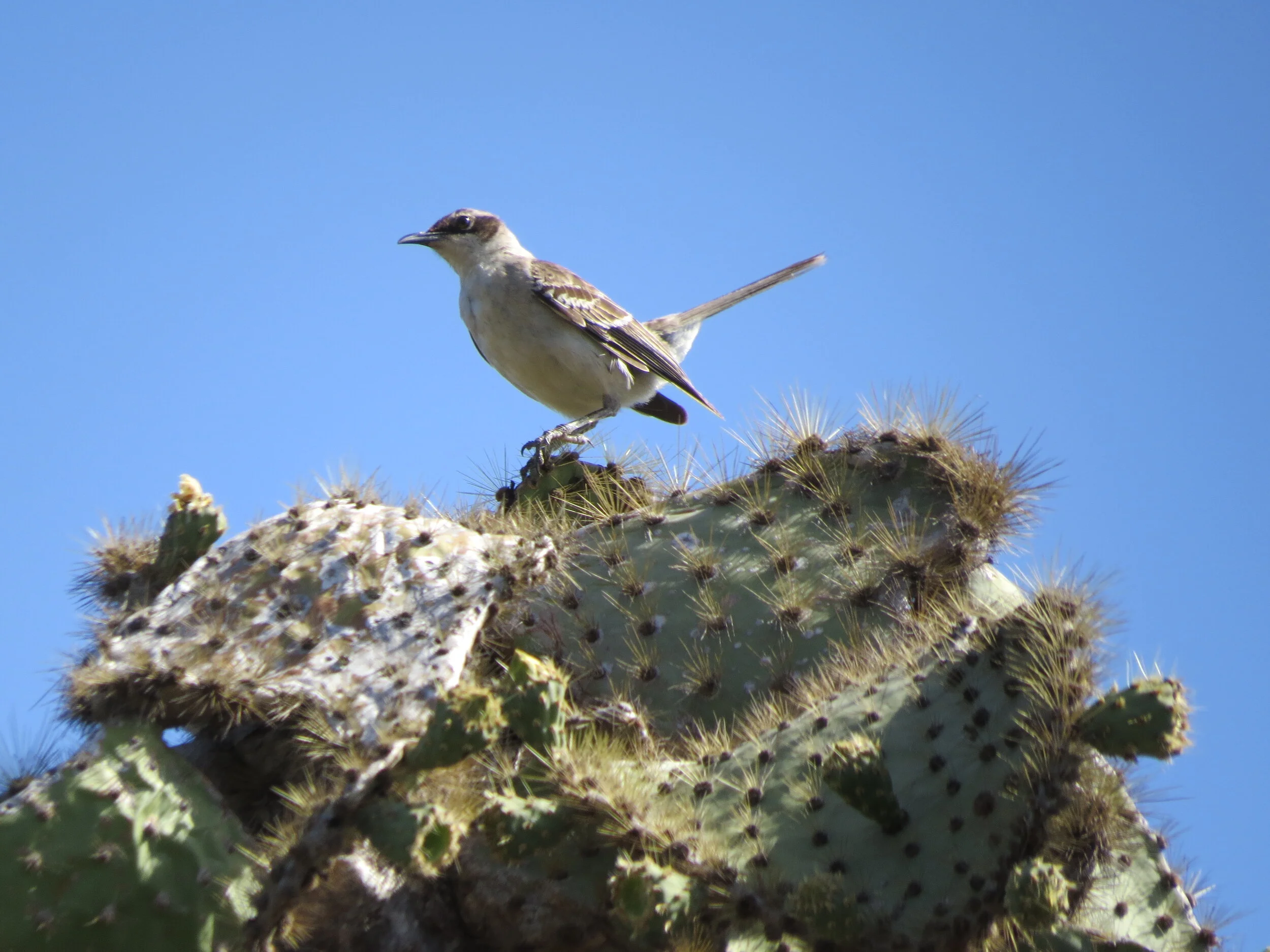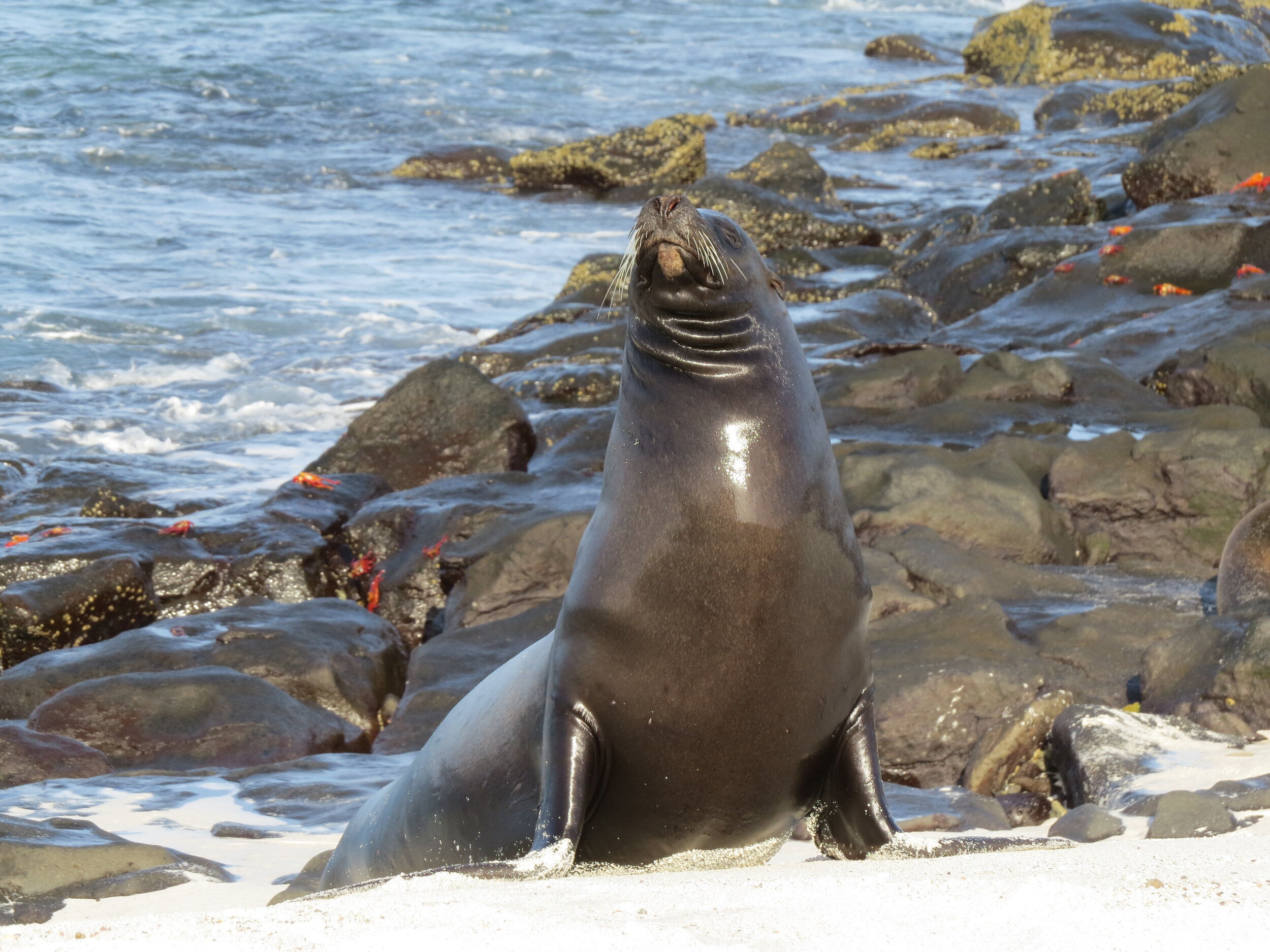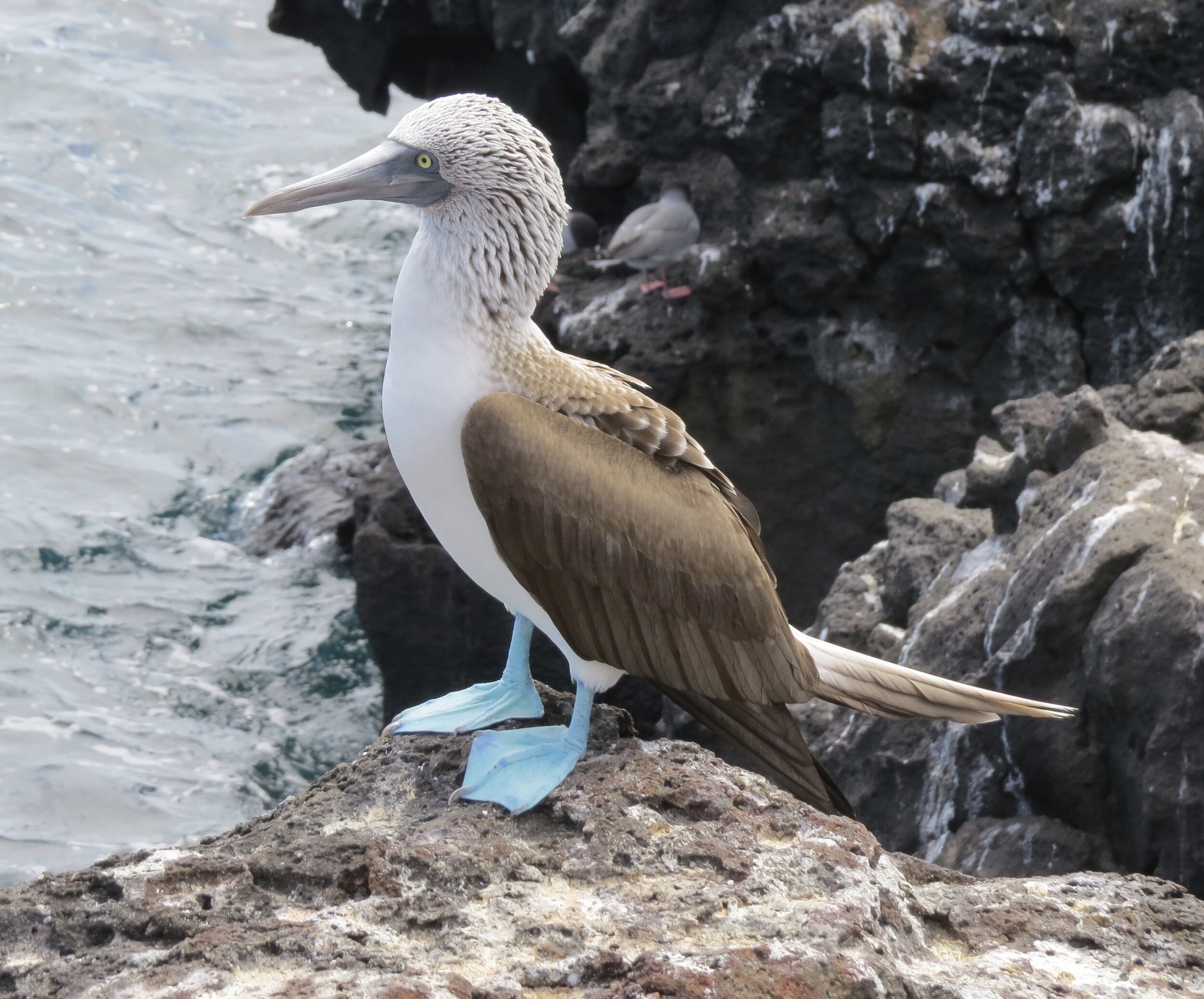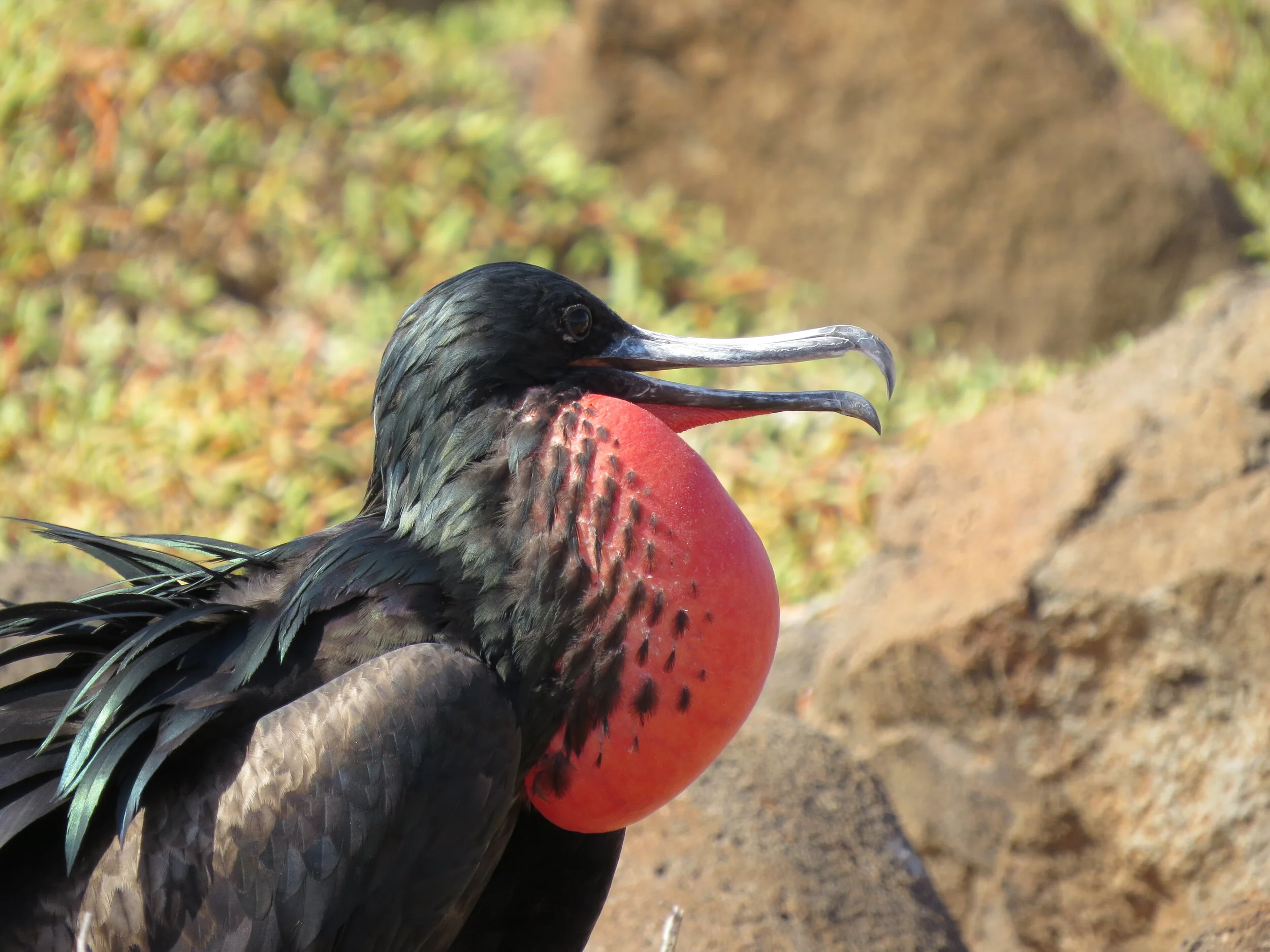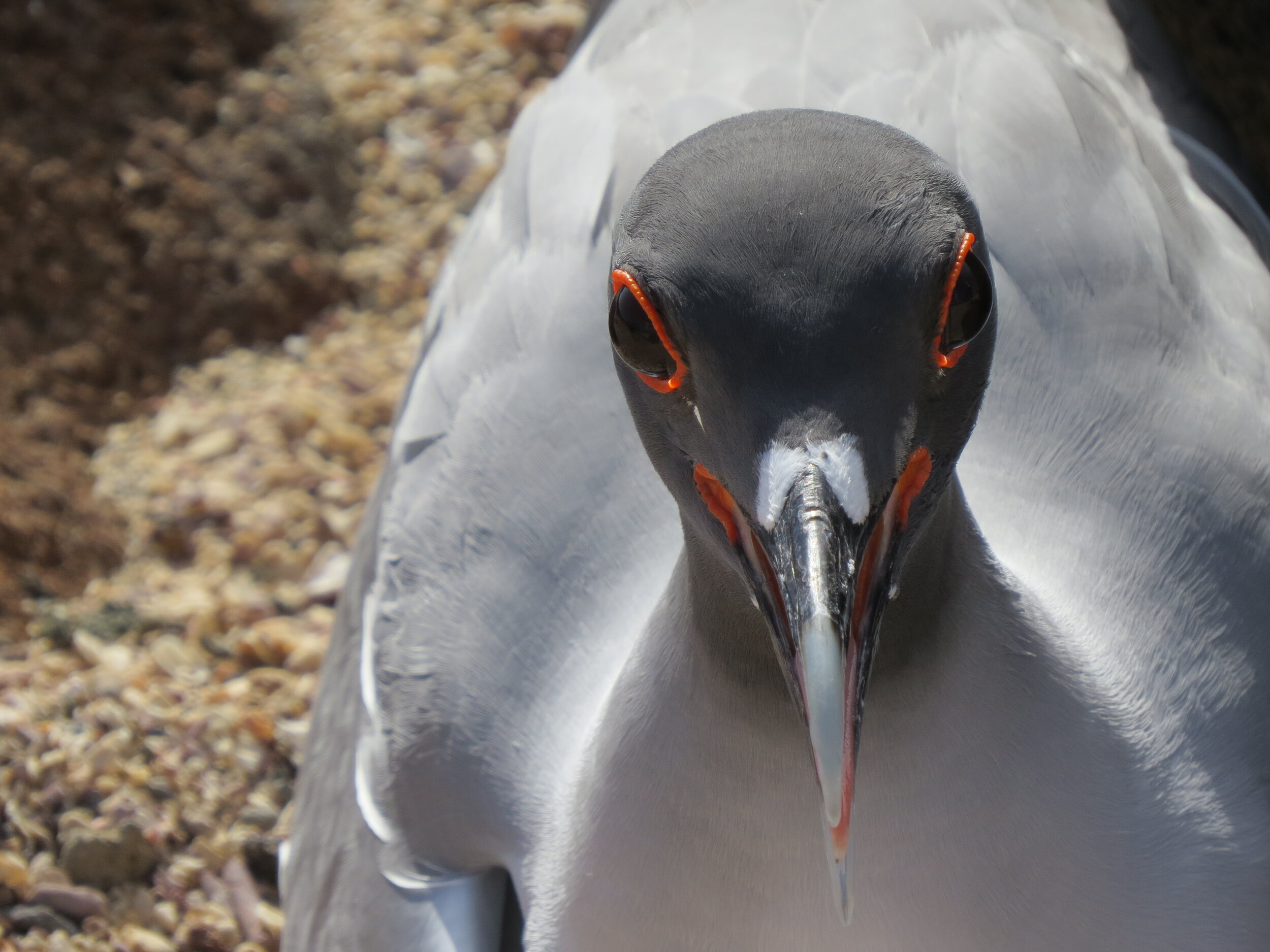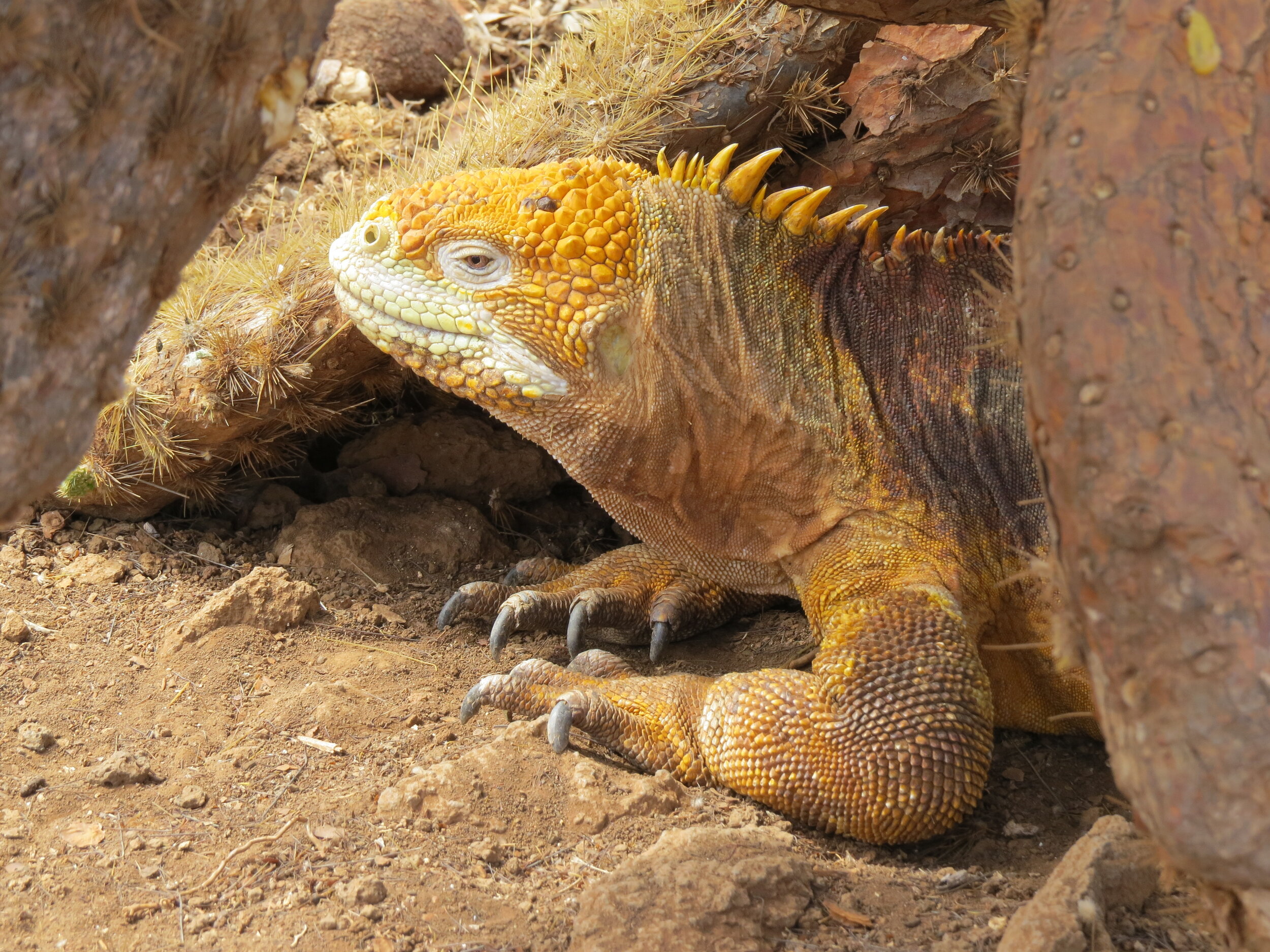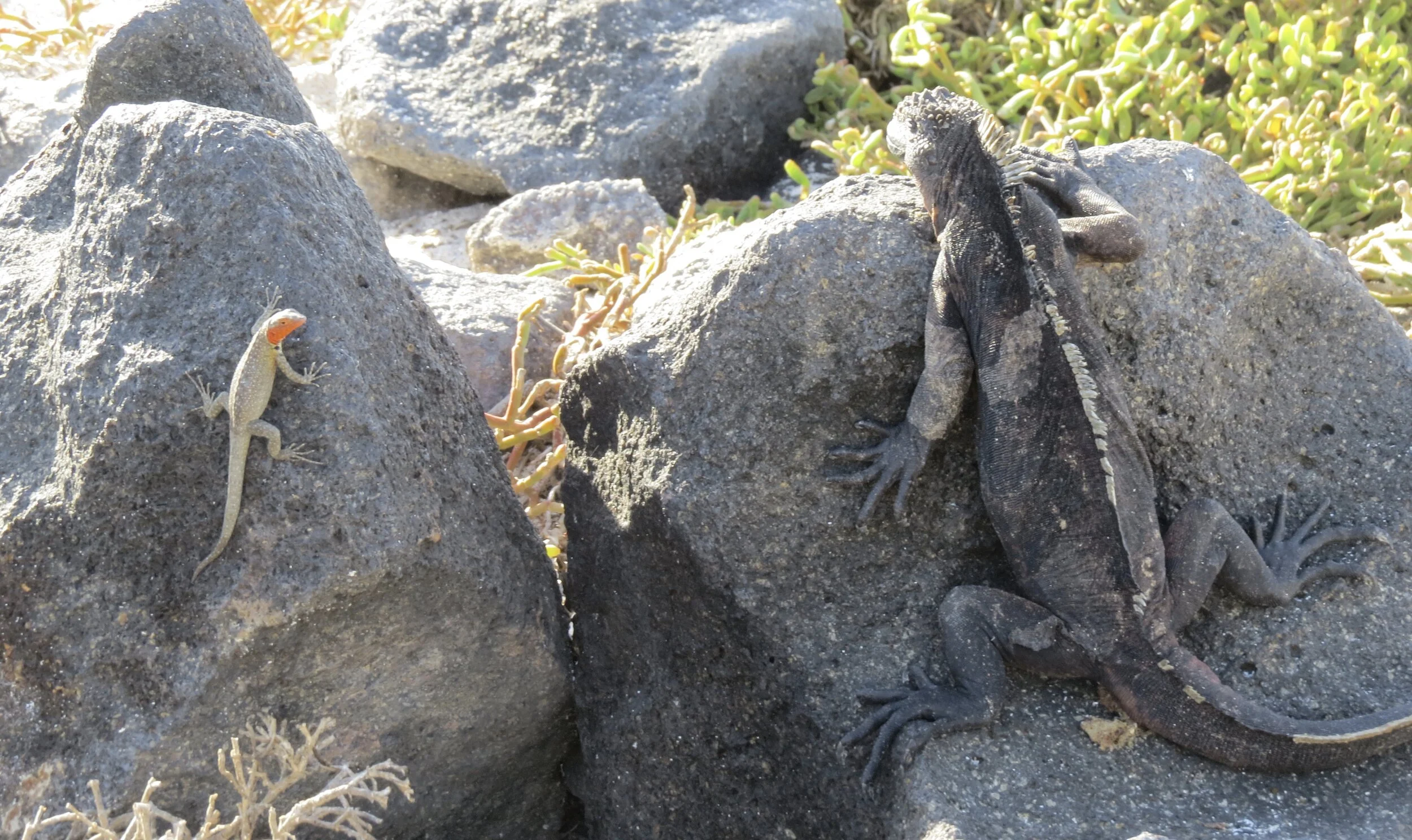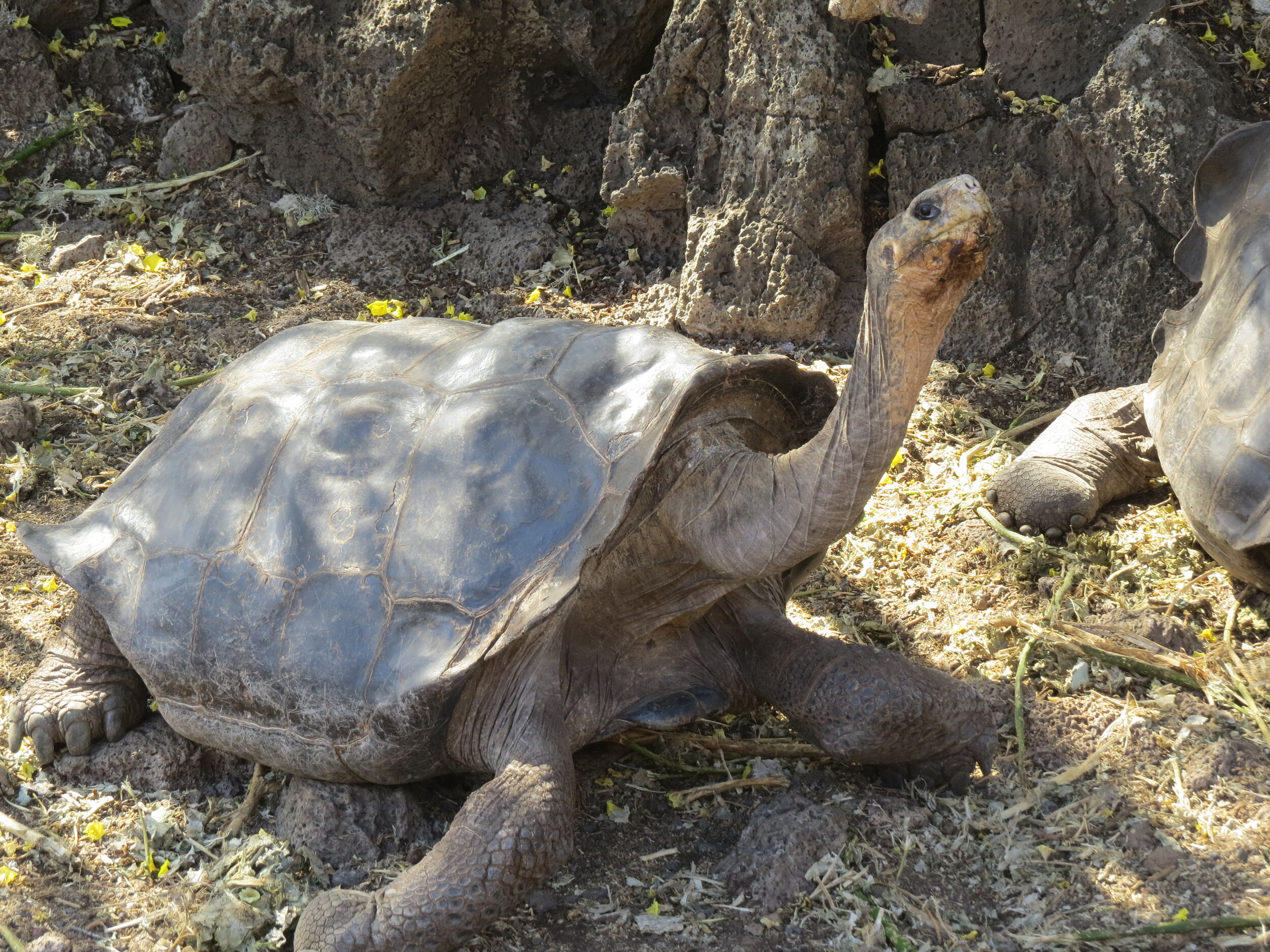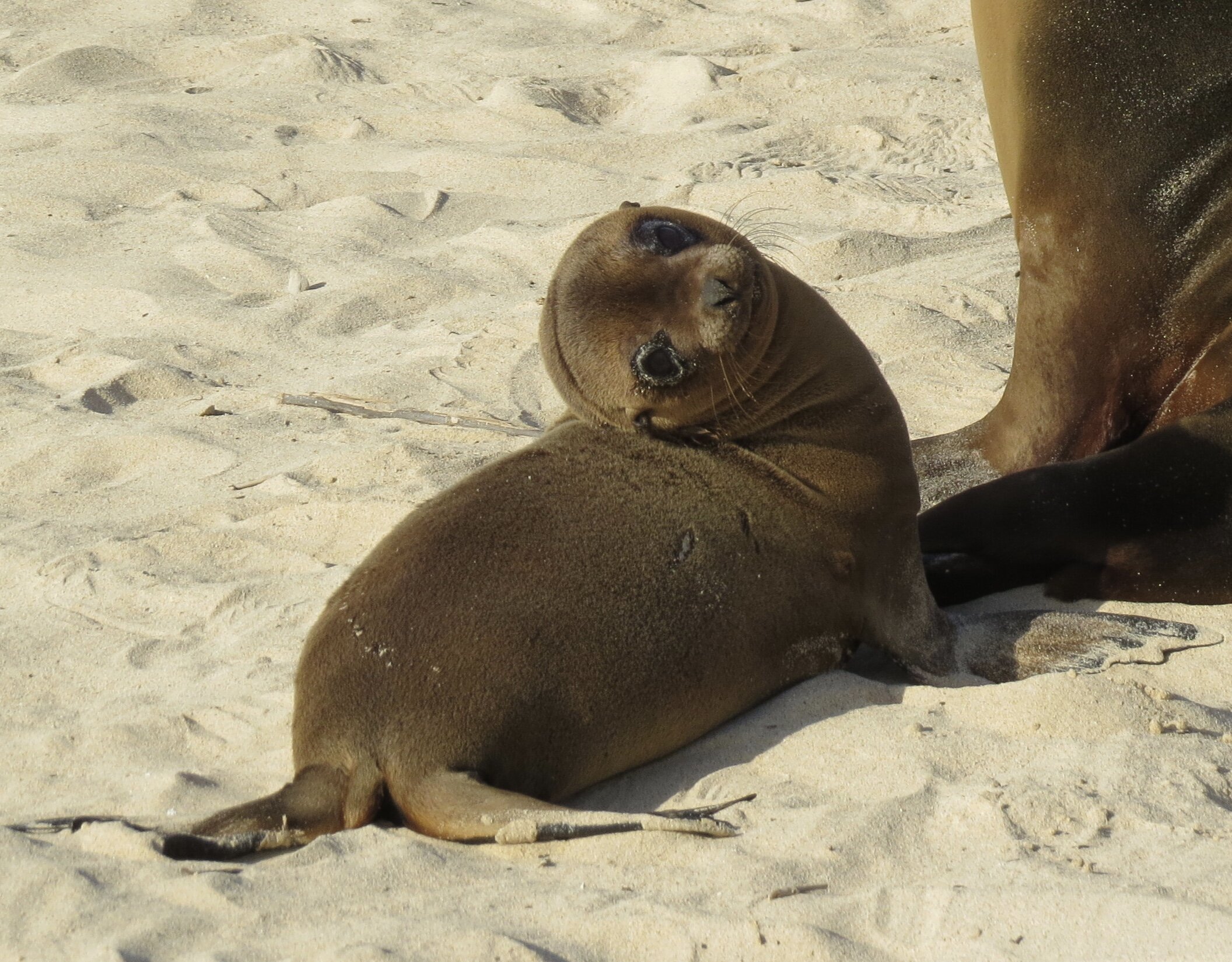Sally Lightfoot Crab - sounds like a Beatle song, doesn’t it?
Galapagos Islands: the very name conjures up images of a mysterious paradise, unique species of animals adapted to their environment is special ways.
I am glad and grateful that we had a chance to visit these far away islands, even thought they have now lost some of their magic for me. The intrigue has been replaced by memories of walking among iguanas and swimming with sharks and sea lions.
When we made the decision to travel to South America there were two specific things on our wish list: Easter Island and the Galapagos. I had read a wonderful, insightful book called Charles and Emma by Deborah Heiligman. This book heightened my wish to see these islands for myself.
We flew from Guayaquil, Ecuador west across the Pacific and landed on Baltra, one of the circa 40 Galapagos Islands. The humid heat hit us like a wall.
Tourists can travel to the Galapagos on their own or via booking a planned trip by a travel agency. But even if you go on your own, you cannot visit the National Park areas without a guide or small tour group. We booked our tour of the islands through a travel agent in Florida that specializes in South America. We chose a boat tour that would get us to different islands, rather than staying in a hotel on land. The travel agency adapted our itinerary to our budget by selecting types of accommodations but mostly by adapting the length of stay. The Galapagos are not only expensive to reach, they are expensive in every way since all food and drink comes from far away.
A guide met us at the airport, expertly whisked our luggage away and loaded us and about 18 others onto a bus. It was a 10 minute drive to the boat launch where we climbed aboard a bobbing dinghy. We would repeat this exercise-in-agility many times in the coming days.
The dinghy brought us to a large yacht, or tiny cruise boat. The MV Coral I had about 14 cabins and a total of 20 guests on board plus a crew of 15, including two naturalists.
Our cabin is a small room below deck, with a tiny bathroom. It has everything we need but the closet door won’t open far enough to reach the hangers inside, so we never did unpacked our stuff.
Giant Tortoise
On the very first day we visit the Charles Darwin Station on Santa Cruz Island. This is where the breeding program for the Galapagos Giant Tortoises takes place. Eggs from all over the islands are hatched here and the little Giant Tortoises (a ‘little giant’ tortoise sound like a contradiction in terms), are raised here until the age of 5 when they are released in hopes of survival on their own. We see several huge, ancient tortoises as well as amazing prickly pear cacti that grow into huge trees, some over 400 years old.
We stroll through town and discover that the Galapagos we had imagined is very different from reality. For instance, did you realize that the archipelago consists of nearly 40 islands, four of which are permanently inhabited, with regular towns?
And did you know that over 30,000 people live here in Galapagos? I had pictured uninhabited islands… The cities of Santa Cruz and San Cristobal have schools, stores, government buildings and much more. Two airports serve the islands. Galapagos was used as a penal colony by Ecuador; most houses have bars and gates. It does not have a friendly feel to it.
The heat is incredible. There is almost no rain on these lava islands. Some are lush and green but others are a volcanic wasteland. In fact, one early explorer wrote home to describe that he had arrived in what he truly thought was hell....
Three main ocean currents influence the archipelago, bringing different temperatures and nutrients that influence wildlife here. The Humboldt Current is a cold, South Equatorial Current which comes into the Galapagos waters from the west. This current runs up the coast of South America, heading north from the cooler waters of Antarctica, and when it gets to the Equator it heads west. The second one is the Panama Current, coming from the north and bringing warmer waters to the Galapagos Islands. Finally, the Cromwell Current is a very deep-sea current, and it runs from the west. Where these three major ocean currents meet, are the turbulent waters surrounding the Galapagos Island on which we bob.
One of Darwin’s finches?
That first night we sleep well in our slightly rocking bunks. However, the next two nights are though as we cross open ocean and cope with high swells rocking the small boat. Things fly through the cabin and we end up sleeping on the outside deck to get fresh air. Most of us don't get sea sick but we do rock for 3 days afterwards…
We hike across Mosquera Islet and see many birds up close, including - to my delight - the Blue Footed Boobie. We watched documentaries about the Galapagos before coming here and are thrilled to see these unique birds in real life, as well as the bright red Sally Lightfoot Crabs scurrying across the black lava rocks, pelicans, swallowtail gulls and many others.
One of the funnest animals is the sea lion, which looks exactly like our North American seal but the ears show that they are sea lions. It is amazing that all animals here have no fear of people. The seals come right at you. They act like puppies, following us and wanting to play. It is the hardest thing not to reach out and pet them. But this is a National Park and everything is highly protected - you cannot take a rock or a shell or touch anything. And rightly so.
Suntanning with the sea lions…
Next we hike North Seymour island where huge Frigate birds soar overhead and young ones with white heads perch in trees, looking like bald eagles.
Iguanas live on most of the islands but each are different species, having adapted to life on each specific island, much like Darwin’s finches. Some islands have black iguanas, elsewhere they are yellow or even pink. We also spot the swimming ocean iguanas.
Can you spot the tourists, dude? Funny looking creatures, aren’t they…
We hike across Santa Fe and South Plaza Island. Being on a boat allows us to visit more places although it also has the disadvantage of rocking and bobbing.
However, the biggest thrill for me was being able to swim right off the back of the boat. Even after a few excited calls of "shark!" I couldn't figure out why it was OK to swim when there were sharks but I trusted that our guides knew what they were doing. The white tip reef shark is not dangerous, just curious. We snorkelled several times and it was beyond description to be in the ocean and have a large sea lion coming straight at me, like a bullet, only to veer off at the last second. At one point two sea lions swam alongside me on either side, clearly wanting to check me out. I watched turtles swimming below me, as well as hundreds and hundreds of colourful fishes like parrot fish. And sharks. Pretty cool.
On San Cristobal Island we strolled through town and it was a bizarre experience to run into two friends from Canada. San Cristobal has shops and hotels. We visited the Galapagos Interpretation Center. Sweat dripped of our bodies even just standing still, reading displays about the violent human history of these islands. I don’t know why the animals here are so tolerant of humans: they killed over 100,000 turtles and thousands of whales during the mid 1800 to mid 1900's. Nowadays 97% of the islands is strictly protected as a National Park. All we can do is hope it will always stay this way and that Galapagos' amazing variety of wildlife, which demonstrates its capacity to change and adapt, will be around for many generations to come.
Sea lions have their own boat here…
Reflecting back on this trip, I am very glad to have been able to make this amazing trip and to see this special place on earth. But it is a very long way to travel, expensive and, in our opinion, a bit overrated. Like 'Serengeti' the name 'Galapagos' has mysterious allure, but we have visited many places where plants and wildlife have adapted to their environment. Not all animals are unique to the Galapagos: in places like Australia's Great Barrier Reef we also saw giant tortoises and birds that stayed on their nest with us only a foot away from them. We saw similar iguanas in many different countries.
If you can go, do it. But otherwise savour nature anywhere - nature is always incredible and forever adapting.
To learn more about nature of the Galapagos Islands, we recommend these documentaries:
• National Geographic: https://www.youtube.com/watch?v=6UqiDs-_1A8
• David Attenborough: https://www.dailymotion.com/video/x4ool01
https://www.darwinfoundation.org/en/
https://www.savacations.com/destinations/galapagos-tours-cruises/


